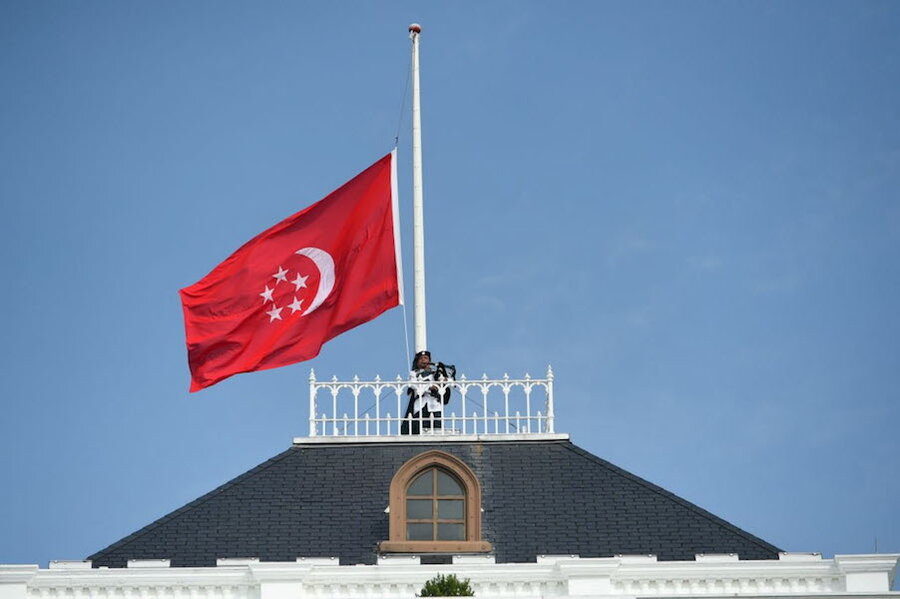A legacy in Singapore for how countries can rise above ethnicity
Loading...
A potent force in the world today is the notion that people of a particular ethnicity, say Danish or Thai, should also have a monolithic vision for their society. Vladimir Putin, for example, defines Russian “civilizational values” for Russian-speakers anywhere.
One leader who broke that mode of thought was Lee Kuan Yew. The founder of modern Singapore, who died in March, was ethnic Chinese. Yet he knew when to lay aside his heritage for higher ideals about identity, both individual and collective.
Mr. Lee’s way of running his tiny island state of 5.4 million people – under autocratic rule with a free market – was a model mostly adopted by China after 1979. But he differed from Beijing’s ruling Communist Party by not creating a national identity based on Singapore’s largely Chinese population. Also unlike China, he showed no resentment toward or humiliation about past colonizers of his land (Britain and Japan). He upheld rule of law and an independent court system, symbols of universal values.
Lee’s death came as leaders in China are struggling to define the national identity, not only for the mainland but for its territories of Hong Kong, Xinjiang, and even the independent island nation of Taiwan. Party leaders realize that economic integration and material prosperity are not enough to bind a country of 1.4 billion. So they have promoted aspects of ancient Chinese culture.
President Xi Jinping said last year that China has built its identity on Confucianism and other philosophies that are “records of spiritual experiences, rational thinking, and cultural achievements of the nation.” He ordered state media and academics not to promote “Western” values. Instead he pushes his vision of a “China Dream,” which is based on restoring Chinese greatness in the world and ending past humiliations.
In both polls and protests over the past year, however, people in Hong Kong and Taiwan have revealed a distinct identity in both political values and everyday culture. The “Umbrella Movement” in Hong Kong fought for freedom to select election candidates. In Taiwan, the “Sunflower Movement” turned back attempts for more trade and cultural influence by mainland China.
In Xinjiang, Muslim Uighurs are in revolt over China’s attempts to bring Han Chinese into their lands and to impose Chinese culture. Beijing’s attempts border on the desperate. In February, party officials led 10,000 people in a line dance next to a mosque, playing a popular Chinese song, “Little Apple.”
In Tibet, too, officials have imported Han Chinese and their culture by the train load. Beijing recently said that it will decide, not Tibet’s Buddhist leaders, whether their spiritual leader, the Dalai Lama, will be reincarnated.
This struggle over defining Chinese identity is the topic of a current exhibit in Hong Kong called “Scenarios for the Chinese Nations.” Artists from mainland China, Hong Kong, and Taiwan were invited to create works that challenge the idea of a monolithic vision of society. The organizers hope to show the future of China can be based on a “coexistence” of different identities among people identified as Chinese.
That was Lee’s vision, and after his death, perhaps China’s leaders will learn to emulate that particular model, too.







